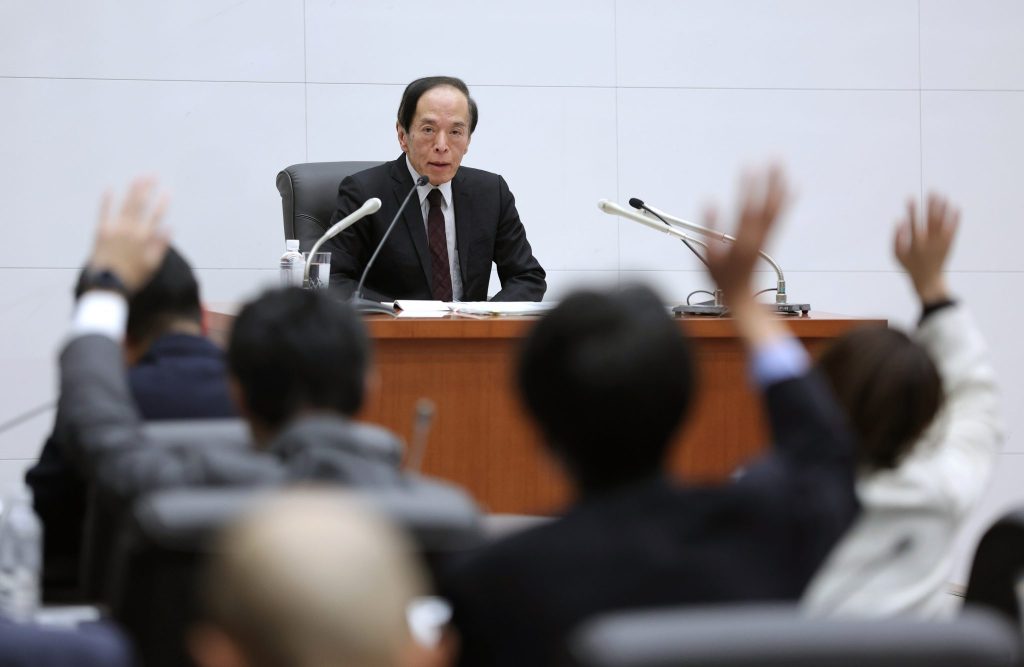In a year marked by a slow pandemic recovery, global conflict and interest rate hikes, the Japanese
economy faced inflation, exchange rate volatility, rising commodity prices, nominal wage increases and
other shocks. The Bank of Japan (BoJ) and Prime Minister Fumio Kishida’s government implemented
some controversial policies to attend to these disruptions.
After the COVID-19 pandemic, inflation rose much faster in the United States, the Eurozone and the United Kingdom than in Japan. Western central banks raised interest rates, increasing rate differentials between these countries and Japan. This caused capital to exit Japan and the real effective yen exchange rate in September 2023 to reach its lowest level in more than 50 years.
The weak yen raised import prices — and consumer prices. Higher prices of oil, natural gas, food and other commodities in the wake of the war in Ukraine also increased inflation. Nominal wages rose in response to a tight labour market and government pressure — further feeding inflation. The Japanese consumer price index has increased by more than 6 per cent between October 2021 and September 2023.
Unfortunately, consumer price rises have exceeded nominal wage hikes. Real wages fell by 2.4 per cent in September 2023 from their levels a year earlier, reducing consumption. Real consumption spending fell at an annualised rate of 3.5 per cent in the second quarter of 2023 and 0.2 per cent in the third quarter.
The BoJ has been using expansionary monetary policy to raise inflation since 1998. Since 2016 the BoJ has been using yield curve control. This initially involved setting short-term interest rates at negative 0.1 per cent and allowing 10-year interest rates to fluctuate within a band of 0.25 percentage points around a baseline of 0 per cent. From December 2022, the band was progressively increased. Now, the BoJ allows the 10-year rate to exceed 1 per cent, while keeping the overnight rate at negative 0.1 per cent.
These tweaks came in response to several factors. One is rising inflation. Another is that the BoJ, to control interest rates, had accumulated more than 50 per cent of outstanding Japanese government bonds. This threatens the liquidity of the government bond market. By giving greater play to market forces in setting long-term interest rates, the need for the BoJ to continue purchasing government bonds decreases. In addition, low interest rates in Japan and high rates abroad contributed to the Japanese yen’s fall to 150 yen per US dollar, far weaker than the level of 100–110 suggested by fundamentals.
But BoJ Governor Kazuo Ueda does not intend to tighten policy until inflation is sustainable, which he defines as a situation where inflation is not driven by temporary factors such as rising import prices, but by a virtuous cycle of increased real income and spending. Since real wages and consumption are falling, the BoJ will hesitate to tighten policy.
Prime Minister Kishida responded to inflation by unveiling 17 trillion yen (US$113 billion) of stimulus in November 2023. The package extends subsidies to reduce the impact of higher energy prices, provides cash to low-income households and lowers taxes.
But since Japan’s fiscal deficit averaged 13 per cent of GDP over the last three years and is forecast to equal 6.2 per cent of GDP in 2023, the package may be trading off short-run benefits with long-term costs. If the BoJ succeeds in stimulating inflation and normalising interest rates, the burden of servicing Japan’s enormous public debt will be heavy.
While the success of monetary and fiscal policies remains uncertain, some Japanese industries are outperforming. The auto industry is on target to post its most profitable year in history. Toyota forecasts net profits of 3.95 trillion yen (US$26.1 billion) for 2023. Japan’s weak currency increases the yen value of repatriated earnings — Toyota reports that each 1-yen depreciation against the US dollar increases profits by 180 billion yen.
Banks, too, are performing well. They have benefited from rising interest rates in Japan and around the world. They can raise funds almost for free from depositors and invest these in Japanese government bonds and higher yielding assets abroad. Since government bonds are classified as risk-free by the Bank for International Settlements, commercial banks can invest in government bonds without setting aside any capital. As interest rates on government bonds have increased, the interest rate margin between bank earnings on assets and payments to depositors has increased.
One underperforming sector is cosmetics. Firms such as Shiseido are dependent on the Chinese market. China’s slowdown plus a Chinese consumer boycott of Japanese firms hit the cosmetic sector hard. Cosmetics stocks have fallen 34 per cent between January and November 2023.
Japan’s outlook for 2024 remains uncertain. If consumption increases and stokes inflation, the BoJ may abandon negative overnight interest rates. If the world economy dips, flagship sectors such as automobiles and machinery will also slow. If conflict in the Middle East or elsewhere raises oil and natural gas prices, Japan will experience unhealthy inflation and a deterioration in its trade balance. This would put downward pressure on the yen.
More recently, Japanese politicians have exploded the national debt. For an economy that hovers close to full employment, running persistent large budget deficits risks crowding out the private sector. During Japan’s postwar boom, entrepreneurs such as Akio Morita of Sony, Konosuke Matsushita of Panasonic, and Tadashi Sasaki of Sharp took intelligent risks and led Japanese companies to success after success. The Japanese government should return to fiscal discipline and once again give pride of place to Japanese entrepreneurs and workers.
Willem Thorbecke is a Senior Fellow at the Research Institute of Economy, Trade and Industry, Japan.
This article is part of an EAF special feature series on 2023 in review and the year ahead.

